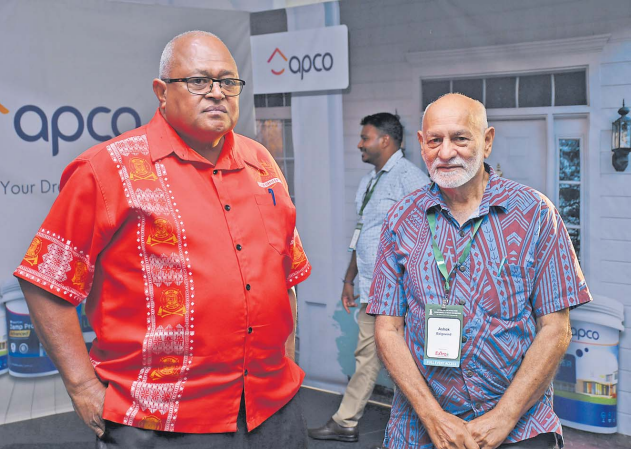ARCHITECTURE and construction are not just about buildings; they embody the culture, identity, and people who reside within these structures, says Member of Parliament Manoa Kamikamica.
Mr Kamikamica told attendees of the Fiji Architecture Conference and the Construction Industry Council trade show on Thursday evening that these structures designed and built often reflect who we are as a nation and what we are and what we value in society.
“From traditional Fijian architecture that embodies resilience and communal living to modern designs that speak of sustainability and innovation, the built environment continues to tell the story of Fiji’s journey of progress,” he said.
“Your work as professionals ensures that the development is not just about concrete and steel, but about creating spaces that uplift communities, protect our environment and inspire future generations.”
Mr Kamikamica said Fiji’s building code also needed to be reviewed.
“I understand it needs a bit of work as well, and I’m hopeful that it can be progressed so that we can continue to build a really solid construction industry and a very successful one at that.
Mr Kamikamica urged participants to use the conference as a platform to connect, collaborate, and challenge themselves to think of what more could be done for Fiji.”
Plea to use metal
A GROWING termite crisis is eating through Fiji’s buildings at a pace that architects say is becoming too costly and dangerous to ignore.
Speaking at the EXTRA Fiji Architect Conference and Trade Exhibition in Nadi, Ashok Balgovind, managing director of Ashok Balgovind and Associates, said the damage now seen in homes, schools and commercial structures could be traced back to years of using untreated timber.
“The termite infestation is growing faster than people.
So, the alternative is to go into metal rather than timber,” he said.
“There was a period when untreated timber was used, so that is a major area of termite infestation. In fact, termites have gone through some of the concrete structures.”
He said one of the most alarming cases involved a school currently being torn down.
“At the moment, we are demolishing a school, a 10-classroom school, where the termites have just about virtually demolished the building.
“That’s big damage, over a million dollars’ damage to the institution that built the school. But it’s part of the disease that we are trying to overcome and trying to see how best to get to the end of it.”
Balgovind said tougher rules on construction materials were overdue.
“The main thing is to not use untreated timber. The treated timber has some resilience, and there are different grades of treatment that will prevent some infestation. So those are things. The authority must see that untreated timber is not sold for building purposes.”
He said the issue was affecting both small households and major structures.
“It’s a challenge for the lowincome houses and also for the bigger structures, because you have to do full compliance and those are areas I have been seeing even in the older buildings, because the concrete strength was lesser, they have penetrated the concrete and come from top to bottom.”
\Balgovind said eradicating the problem remained a major challenge.



